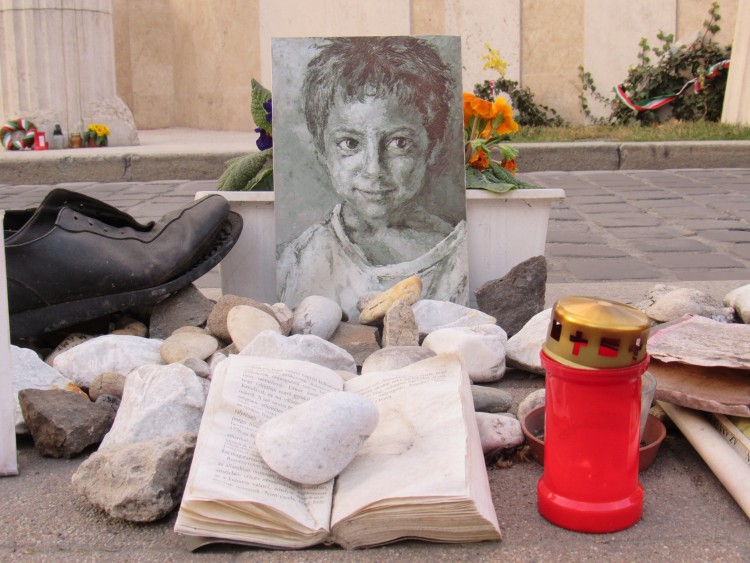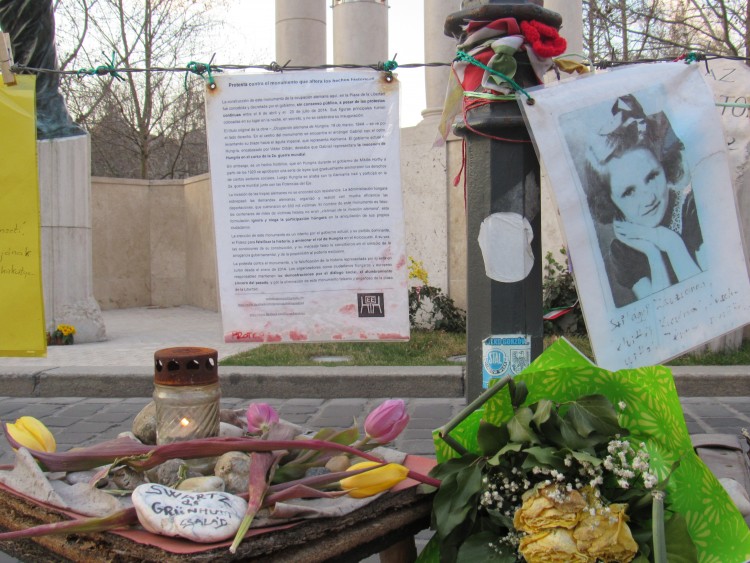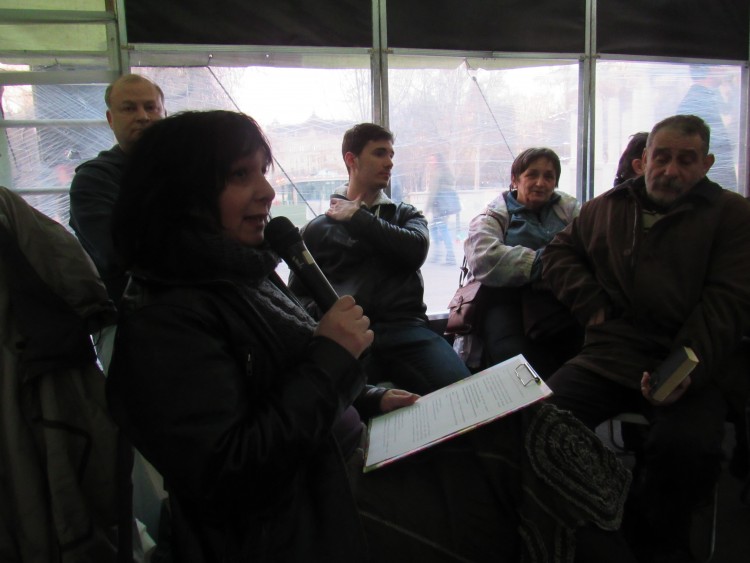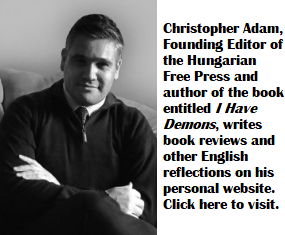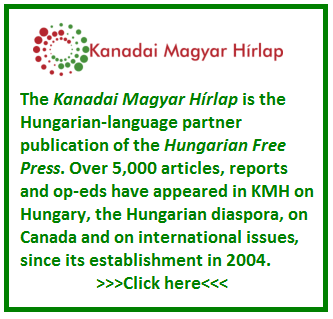It’s impossible to detach public history and collective memory from contemporary politics. How a society portrays the past is determined by current realities, contemporary values or interests, as well as the dominant, “preferred” narratives of history. But the government and public institutions don’t have a monopoly over the past ; where civic engagement is strong, grassroots organizations and local activists have the agency to alter the dominant historical narrative or, indeed, offer a new one altogether. When I was in Budapest a couple of weeks ago, I witnessed two striking examples of how a sense of civic engagement can influence the politics of memory.
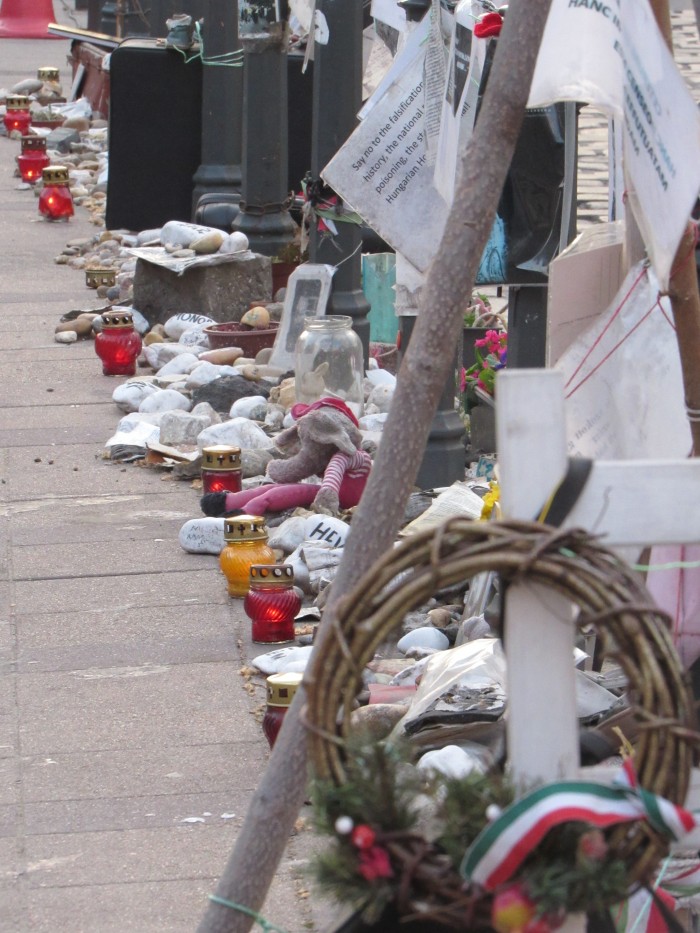
The “alternative” Holocaust memorial in Budapest’s Freedom Square/Szabadság Tér. Photo: Christopher Adam.
I often tell friends who are planning to visit Budapest, that the Hungarian capital’s most important and most telling monument is an alternative Holocaust memorial established in Freedom Square (Szabadság tér), just over a year ago, when Prime Minister Viktor Orbán’s government began constructing a monstrous monument commemorating Hungary’s occupation by Nazi Germany and portraying the country as a passive, innocent victim of the Germans. A group of remarkably dedicated activists erected their own “makeshift” monument consisting of photographs of “ordinary” victims, personal mementos, shoes, votive candles, flowers and rocks. These activists communicate and organize through Facebook. Not only do they now form a coherent community, but they are starting to redefine Freedom Square. Anyone can add to the memorial and it changes from month-to-month. In stark contrast to the grandiose and static bronze heroes on horseback, this monument is modest, but it’s also dynamic and a powerful example of how to challenge (and deconstruct) the grand narrative of history.
The only reason this monument has remained untouched by Hungarian authorities–who are distinctly unsympathetic to its message–is thanks to the commitment of about three dozen activists who are present each and every day in the square. They hand out multilingual information sheets to tourists, they are a sign of constant resistance to the ever-present police officers, who linger in pairs, around the largely abandoned government monstrosity that looms over the votive candles and mementos. It’s critical to note, that since the government monument–situated about three meters away from the alternative memorial–was constructed without any input from the affected community and from historical “stakeholders,” it attracts no interest, respect nor attention. Passers-by only see a living, organic, grassroots reflection of history that now partially encircles it. And–most importantly–these organizers, students, historians, essayists, pensioners, children and grandchildren of Holocaust survivors are an overt sign of resistant. One of the regulars in Freedom Square, actor Róbert Garai, won a grant last year from the Hungarian government, as part of a series of official Holocaust commemorations. Mr. Garai handed back the circa $10,000 that he received, in order to protest the government’s blatant falsification of the country’s World War II history.
During the winter months and in the early spring, twice a week the “guardians” of this living and ever-changing memorial organize public talks on issues related to the Holocaust, Hungary’s responsibility in the murder of 600,000 Hungarian Jews, contemporary antisemitism and racism, as well as the broader question of civil liberties in Hungary. Organizers spend a half hour assembling a tent in the middle of the square for these talks, and then another half hour removing it. As darkness falls on Freedom Square, you could hear the buzz of drills and hand-held tools disassembling the tent, while a handful of participants linger and quietly reflect in front of the glowing votives.
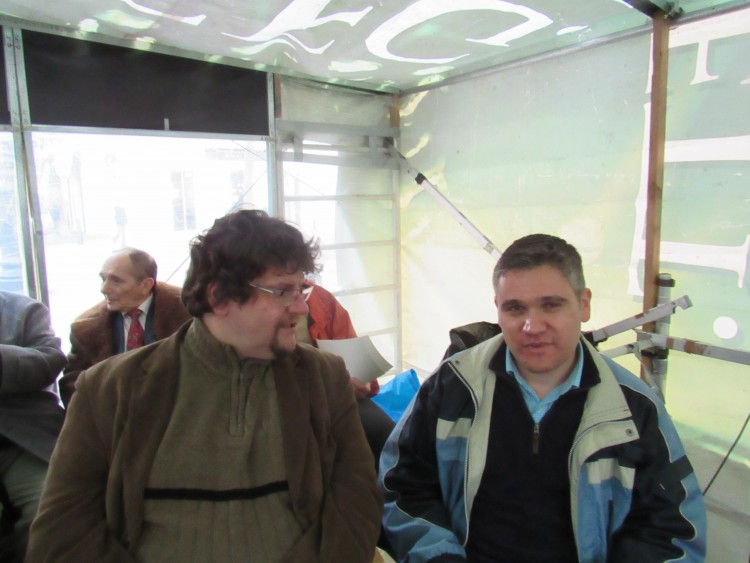
Public talk in Freedom Square on March 19th, 2015…this was the 71st anniversary of Nazi Germany’s occupation of Hungary, on March 19th, 1944.
On March 19th, I gave a talk along with historian Iván Szegő (from the 1956 Institute). The discussion was moderated by prominent civil rights activist Eszter Garai-Édler, who set the tone and focus of the discussion, as the tent filled with about 35 participants. “An entire generation came of age in an environment filled with anti-Semitic hate during the interwar period. This isn’t any different today. Isn’t it frightening that a generation of university-educated Hungarians, who have every chance of obtaining positions of political leadership, has been socialized and taught within this antisemitic environment…in an environment where Miklós Horthy is considered a role model?”–noted Ms. Garai-Édler.
We spoke about the fact that Hungary was a trailblazer when it came to antisemitic legislation, and that Hungarian authorities were “overachievers” when it came to orchestrating and administering the most rapid deportation of Jews in all of war-torn Europe. Adolf Eichmann had, in fact, commented on the enthusiasm of Hungarian authorities, in terms of collaboration and the deportation of the country’s Jews. Ms. Garai-Édler told me that young right-wing Hungarians do, occasionally, show up to these talks and they often come to present the stereotypes about Jews and to question the narrative of Hungarian responsibility for the Holocaust that these talks and that the alternative monument aim to explore. The activists allow these voices of right-wing dissent to speak, they are listened to, but the hope is that those who come with prejudice will leave Freedom Square with at least a little more openness to dialogue and to tolerance.
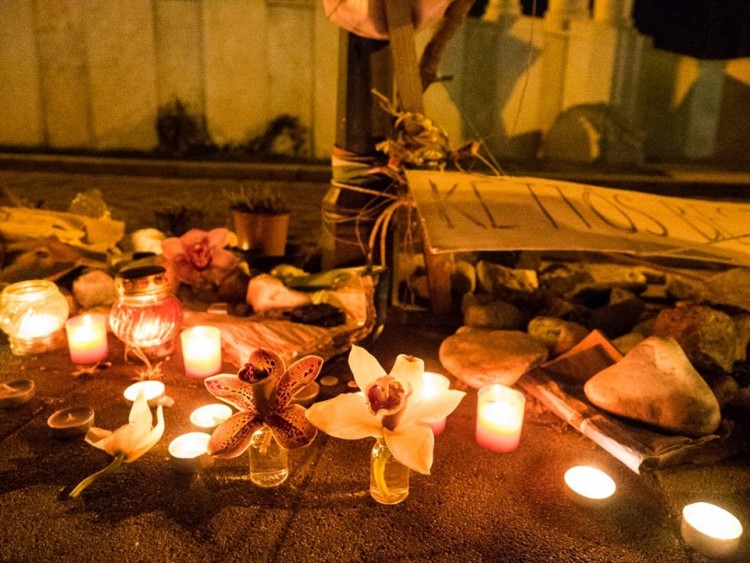
Eszter Garai-Édler, who was the recipient of the Radnóti Anti-Racism award, leaves white orchids one evening at the Szabadság tér memorial. Photo: Anna Vörös.
***
While in Budapest, I witnessed another powerful example of how younger generations of engaged Hungarians take it upon themselves to remember the dead and to reflect on some of the most difficult episodes in twentieth century Hungarian history. Szilárd Kalmár is the chair of Hungary’s Left Party (Balpárt), a left-wing movement formed just over a year ago, which sees the mainstream Hungarian centre-left as having little or nothing to say on issues of social justice. This in turn has allowed for the far-right Jobbik to build its support even among opposition voters who traditionally would have voted for the Socialists. Mr. Kalmár is a thirty-something Hungarian who during the week is employed as a social worker in Budapest’s somewhat infamous 8th District. The borough, home to over 75,000 residents, is known for its glaring poverty, high unemployment, relatively large Roma population and, most recently, is where new migrants to the European Union congregate, before trying to head west.
Mr. Kalmár finished up serving behind a counter in a soup kitchen, which also doubles as the headquarters of the Left Party, as well as a community space with internet access for the local population. The tight space is filled with multilingual posters on anti-racism initiatives and was teaming with local residents, who were either having a meal, were using one of the computer terminals or were chatting with the volunteers. Mr. Kalmár offered me a plate of chicken paprikás, but was then keen to take me on a historical tour showcasing the 8th District’s social democratic and workers’ movement heritage. We walked past buildings that once housed the offices of key left-wing papers, social democratic political movements, a graveside monument for late Hungarian Prime Minister Mihály Károlyi, and he showed me the locations of World War II massacres of 8th District Jews. It was quite an eye-opener, even though I had been familiar with much of the 8th district and some of its local history.
We then walked over to the Kerepesi Street cemetery, which–for left-wingers–is perhaps best known for its massive Workers’ Pantheon and for the grave of Hungarian communist leader János Kádár, the father of “Goulash Communism.” But that isn’t what Mr. Kalmár showed me. He took me to an abandoned corner of the cemetery. Overgrown with trees, an endless tangle of branches and weeds, we came to the untended grave of former Social Democratic government minister Ernő Garami, who served in the revolutionary cabinets of 1918 and 1919, and had previously been the editor-in-chief of the Népszava daily paper. Mr. Garami started off his career as a mechanic, but ended up being one of the iconic (yet by today, largely forgotten) figures of the early twentieth century Hungarian left.
Mr. Kalmár tried to contact Mr. Garami’s descendants, who showed no interest in tending to his grave. After getting in touch with the Kerepesi Street cemetery, Mr. Kalmár was told that as long as the grave did not appear to be completely abandoned, the administration would not remove the tombstone, nor would they excavate and dispose of the remains. So Mr. Kalmár has taken it upon himself to clear the area of weeds and to visit the grave, at regular intervals, with a red carnation.
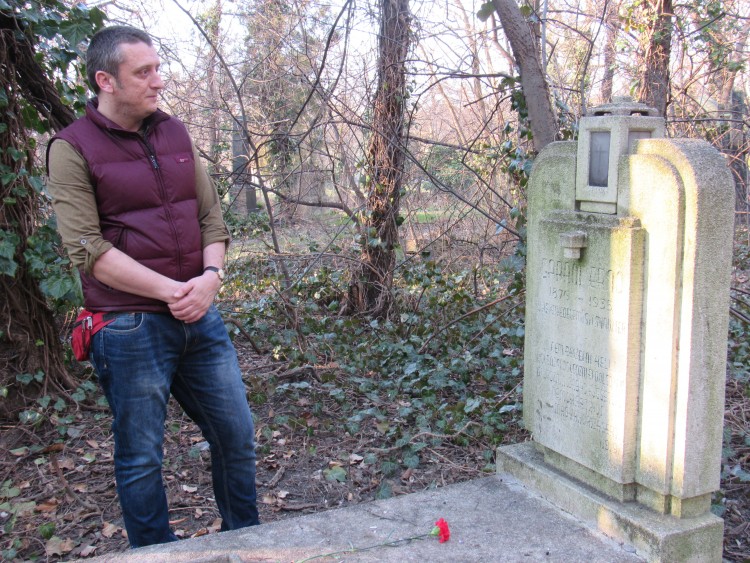
Szilárd Kalmár, a social worker in Budapest’s 8th District, is the only person to tend to the abandoned grave of a prominent Hungarian left-wing political leader. Photo: Christopher Adam.
In my mind, these are striking examples of civic engagements in Hungary. Unfortunately, it is a small-handful of Hungarians–community activists, social workers, artists, public thinkers–who are leading the way, while much of the population is completely disattached from the public discourse. Fear undoubtedly plays an important role. People like Mr. Kalmár or Ms. Garai-Édler, and the handful of outspoken activists, risk losing their jobs and livelihood, and certainly of being labelled with any number of pejoratives by government circles. Unpatriotic, treasonous, Bolshevik, communist–these are just some of the labels that come their way. Yet none of this seems to deter them at all.
If you open your eyes and look close enough, you can see the flickering flame of civic courage in Budapest.

